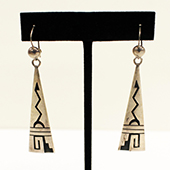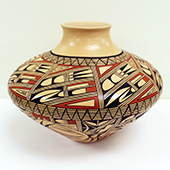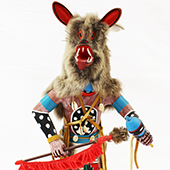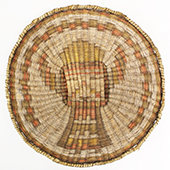Weaving
No one is sure when Hopi weaving began. However, the Hopi had a well-developed and sophisticated weaving culture long before the Spanish arrived in the sixteenth century.
For hundreds of years, Hopi men grew short-staple cotton that was spun into yarn and then woven into cloth. Cotton was the traditional fiber used by the Hopi until the Spanish introduced Churro sheep to the Southwest. By 1650, the Hopi were using both wool and cotton to weave. Traditional Hopi cloth was so finely woven that it was highly prized by many American Indian tribes, so it was traded far and wide.
Hopi weaving was done on a horizontal loom. This type of weaving created clothing that was rectangular or square in shape because this was how the textile was taken off the loom. Square or rectangle mantas, sashes, breechcloths, and shirts did away with the necessity of cutting textiles into more form fitting shapes, which took more time and skill to produce.
The steps of yarn production, dyeing, and weaving were mostly a winter activity, because of agriculture. During the spring, summer, and fall, the Hopi were occupied with planting, growing, harvesting, and storing food crops. Winter provided the time when weaving could be done.
In modern Hopi culture, men continue to dominate all aspects of textile production, just as they did traditionally. Women do more embroidery and knitting; however, loom weaving is still the domain of men. Today, Hopi weavers use many of the same materials and techniques as they have for hundreds of years.
According to Hopi weavers, they put their very breath and spirit into each weaving.
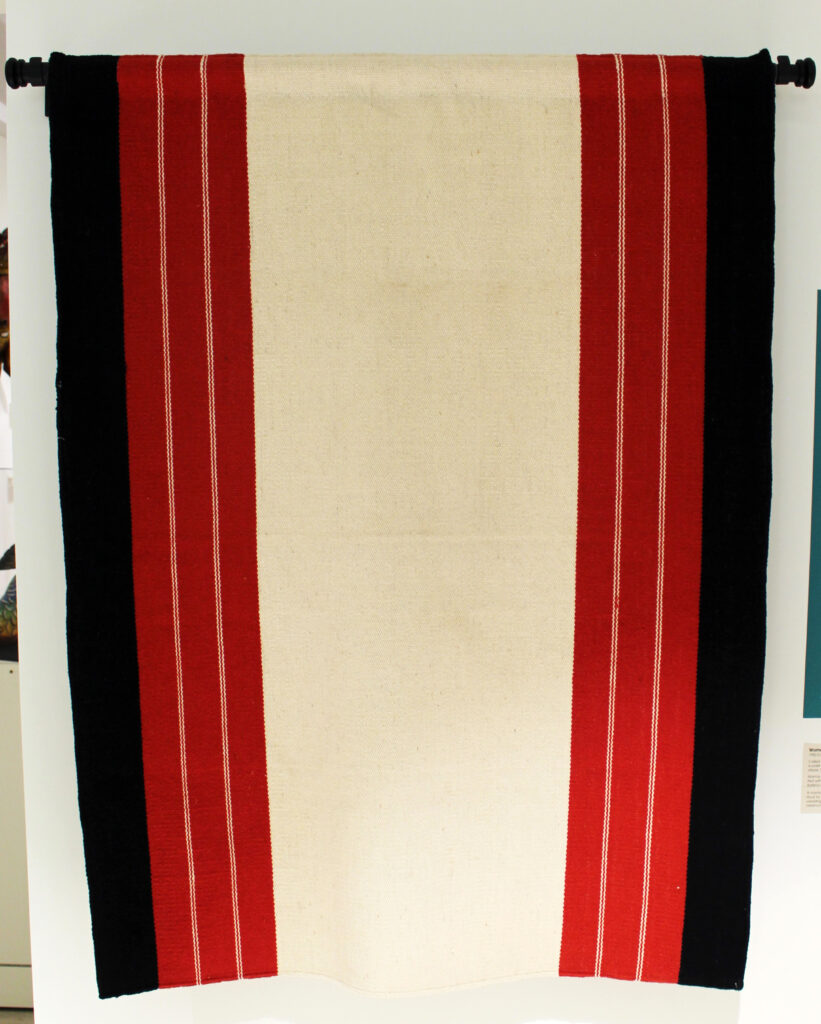
Women’s Wearing Blanket
1982.E.03
Called a manta by the Hopi, this piece is often called a maiden shawl by collectors. It is a woven textile that is wider than it is tall. Mantas usually have a wide, undecorated center panel surrounded by horizontal stripes. The colors can include white, black, brown, blue, and red.
Mantas have ceremonial and practical purposes. They can be worn as shawls or as wraparound dresses tied with a sash. Mantas are worn by Hopi women in the basket dance and by men playing female roles in Katsina ceremonies.
A manta is given to a Hopi girl between the ages of 8 and 12 after her Katsina ceremony, a coming of age ritual for all Hopi children. A girl’s manta is often woven by her grandfather. It is also part of a bride’s wedding garments. Although she does not wear it during the marriage ceremony, it will be worn for ceremonies and dress occasions throughout her life.
Explore the other sections of this exhibit:
